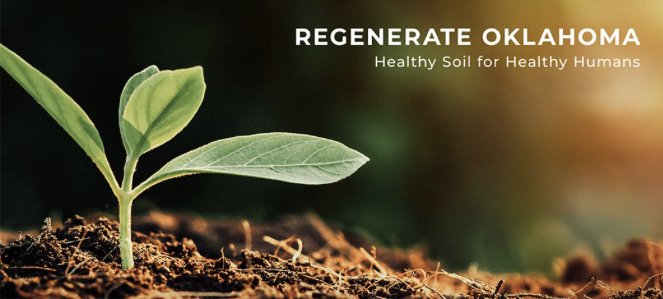Conservation Resources
USDA Helps Producers Prepare for and Recover from Severe Winter Weather
Winter storms create significant challenges and often result in catastrophic loss for agricultural producers, especially for those raising livestock, row crops and vulnerable crops like citrus. Despite every attempt to mitigate risk, your operation may suffer losses. As you prepare for the potential impacts of upcoming winter weather, know that USDA offers several programs to help with recovery.
Analysis of the Cost and Cost Components of Conducting Prescribed Fires in the Great Plains
Fire is a naturally occurring process in the Great Plains and was anthropologically applied first by Native Americans and now by a diverse group of landholder types. Fire is a critical tool to help restore historical fire regimes in the region and maintain and grow benefits for agricultural outputs, risk reduction, and ecosystem maintenance. With the Great Plains dominated by private landholdings, lowering barriers to adoption of prescribed burning is important for increasing its use. Costs are a crucial decision element in adoption and regular use of prescribed burning. Using the responses from an Internet-based survey of prescribed burn professionals in the Great Plains, multivariate regression analysis based on cost can identify critical factors and behaviors. The average cost for a prescribed burn in this study is $11.37 per acre, which is comparatively less expensive than numbers reported elsewhere. Seven significant associated variables emerged including number of burns and acreage, firebreak type, and fuel characteristics. The results suggest that economies of scale play an important role in the cost of prescribed burning. Through the identification of the cost of prescribed burning and the factors that influence it, landowners, environmental managers, prescribed burn professionals, and government agencies in the Great Plains will be able to better understand and implement prescribed burns as part of their land management plans. Read More
Oklahoma Invasive Plant Council
The Oklahoma Invasive Plant Council (OkIPC) was established in 2009 with the mission of facilitating education and management of invasive plant species for the protection of Oklahoma’s economic and natural resources. We strive to increase awareness of invasive plants in the state through education about their sources, their economic and ecological impacts, their prevention and early detection, and their control and management. Our stakeholders are diverse and include federal, state, and local agencies, conservation, agricultural, and land management non-profits, educational and research institutions, plant-related business and industry, and public and private landowners and managers.
The OkIPC recently launched itsInvasive Plant Database, which identifies both problematic and potentially problematic plants for the state of Oklahoma. This database includes the OkIPC’s Dirty Dozen List and the Watch List. The Dirty Dozen List includes 13 of the worst invasive plants species in the state, while the Watch List is made up of invasive plants species that are known to be present in Oklahoma and/or a bordering state, where they are negatively affecting the economy, environment, or human health. Noxious weeds and aquatic nuisance plants are also included in the list. Within the database, a custom list can be created that is specific to a particular region of the state and/or a particular land use type. The database also includes information about each invasive species, including links to images, management suggestions, and distribution maps.
We believe that OkIPC’s Invasive Plant Database could help you and your organization in your vegetation planting and management decisions. We encourage you to visit us atokinvasives.org, where you can find the database, as well as links to OkIPC’s other projects and materials, including infographics, fact sheets, presentations, and posters. We also strongly encourage you to share this information with the rest of your organization so that it will be readily available to your staff and stakeholders who might benefit from it directly. If you have any questions about the database or the Oklahoma Invasive Plant Council, we encourage you to reach out to us.
On behalf of the Board of the Oklahoma Invasive Plant Council,
Amy Buthod
President
Local Working Groups Guide
This guidebook is a set of resources developed through the National Conservation Planning Partnership (NCPP). NCPP Leadership recognized an opportunity to reengage, enhance and improve the Local Work Group process in July 2021. A project team with formed and explored the requests of field level staff and assisted in developing tools to address their findings. Included in the toolbox are sample agendas, notes documents, a bulletin, training resources, and frequently asked questions. We encourage you to adjust the agenda and notes to fit your needs. Download Here
On August 16, 2022, the Inflation Reduction Act of 2022 (IRA) became law. A new FLAG publication highlights the aspects of this legislation that will impact farmers. This Farmers’ Guide to the IRA looks most closely at three different parts of the IRA. First, it looks at what the IRA calls “relief for borrowers.” Second, it looks at what the IRA calls “Discrimination Financial Assistance.” Third, it looks at changes the IRA makes to the American Rescue Plan Act (ARPA). READ MORE
Regenerate Oklahoma
Regenerate Oklahoma
REGENERATE OKLAHOMA is citizen powered in an effort to create media + education, economic incentive for farmers and expanding regenerative agribusiness throughout the state. We invite you to donate to empower our efforts.
2018 Farm Bill
Field Days
Feral Hogs
Conservation Education
State Links
Additional Resources
Fire Effects Fencing
OSU Extension
Download Fact Sheet Here


































